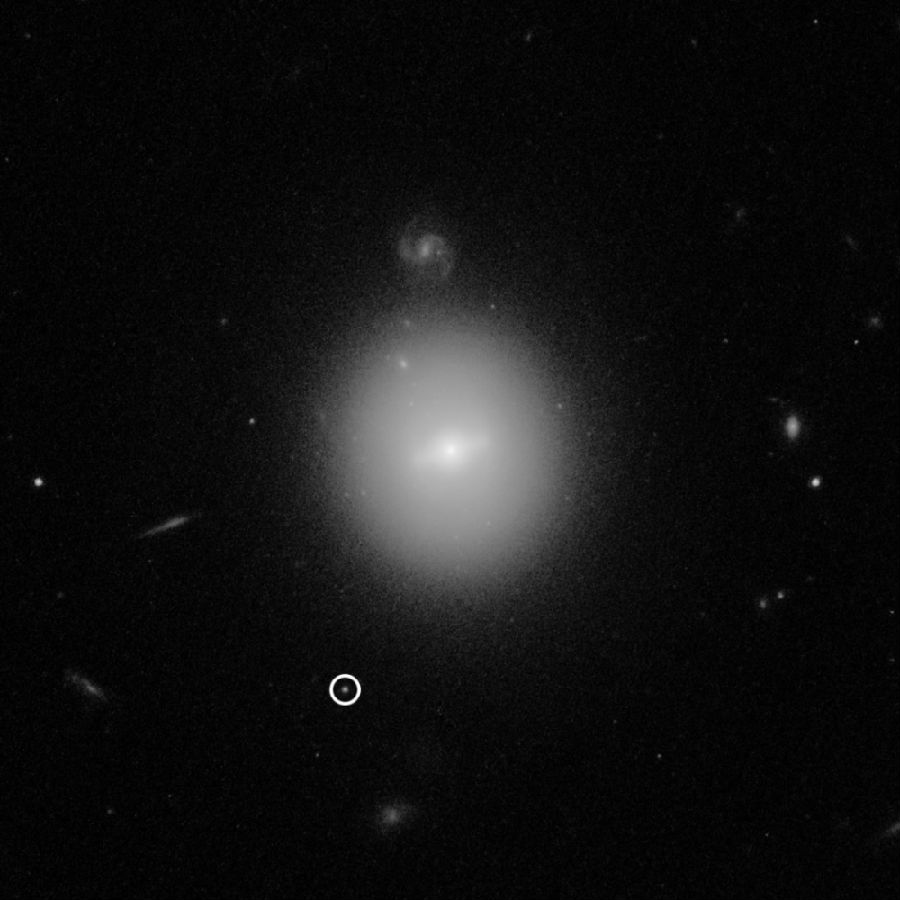Astronomers Identify "Missing Link" Mid-Sized Black Hole
Scientists have identified a mid-sized black hole that could be the "missing link" to help us better understand these mysterious space objects.
Researchers used data from NASA's Hubble Space Telescope and two X-ray observatories to find the black hole, which was in the process of destroying a nearby star.
Black holes are extremely dense objects possessing gravitational pulls so powerful that not even light can escape.
The newly identified black hole is more than 50,000 times the mass of our sun. It sits about 740 million light years from Earth in a galaxy containing far fewer stars than our Milky Way. A light year is the distance light travels in a year, about 9.5 trillion kilometers.
This is one of the few "intermediate-mass" black holes ever identified. It is far smaller than the supermassive black holes found at the center of large galaxies. But, it is much larger than so-called stellar-mass black holes formed by the collapse of huge individual stars.

Natalie Webb is an astrophysicist at the University of Toulouse in France. She helped lead a study on the black hole that was recently reported in the publication Astrophysical Journal Letters.
Webb told the Reuters news agency the study confirmed that the object her team first discovered back in 2010 was in fact an intermediate-mass black hole. The star it was destroying was probably about a third the mass of our sun.
Webb noted that scientists have searched for intermediate-mass black holes for more than 40 years. However, fewer than 10 good examples are known. Scientists believe large numbers of the objects may exist even though they have not been discovered.
"So finding a new one is very significant. Also, a black hole swallowing a star happens on average only once every 10,000 years or so in any ... galaxy so these are rare occurrences," Webb added.
The supermassive black hole at the center of the Milky Way is 4 million times the mass of the sun, about 26,000 light years from Earth. The closest stellar-mass black star is about 6,000 light years from Earth.
Webb called intermediate black holes the "missing link" in understanding the range of black holes. Scientists know a lot about the formation of stellar-mass black holes, which are about three to 100 times the mass of our sun. But they do not know how intermediate-mass black holes form.
Scientists do have a theory that supermassive black holes arise from mid-size ones. However, Webb noted that "without finding such objects, it was impossible to validate this theory."
Intermediate-mass black holes remain difficult to find and scientists are not exactly sure why.
But University of New Hampshire astronomer and lead researcher Dacheng Lin does offer one idea. "The best explanation is that they are mostly in an environment that is devoid of gas, leaving the black holes with no material to consume and ... little radiation to emit — which in turn makes them extremely difficult to spot," he said.
I'm Pete Musto.












